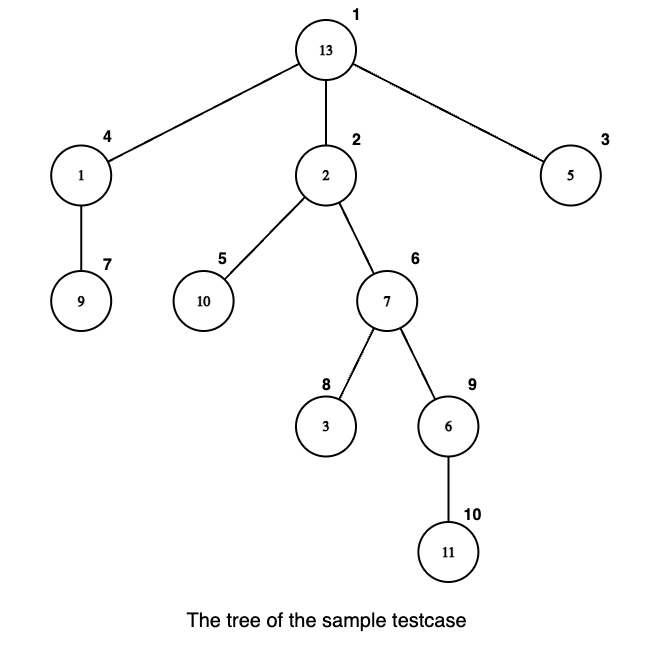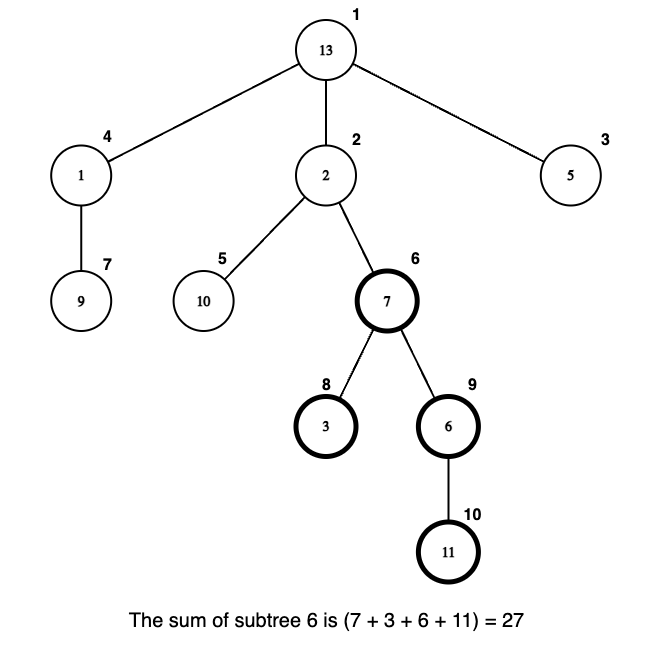Description

Elephants enjoy taking leaves from trees to eat. At the i-th node of the tree, there are vi leaves.
However, trees in computer science differ from real-world trees, the tree has n nodes and n - 1 edges and is rooted at node 1.
If a node is removed, all nodes beneath it (i.e., its subtree) will also be removed.
The problem involves q queries, and each query provides an integer k, asking how many leaves in total (including the leaves at node k) will be removed if node k is removed.
(In this problem, "leaves" are used to represent the value of a node, not the actual leaf nodes as defined in a tree structure.)



Input
The first line contains two integers, n and q.
2 ≤ n, q ≤ 1000 (Testcases 1 ~ 2)
2 ≤ n, q ≤ 2 * 105 (Testcases 3 ~ 5)
The second line contain n integers vi, representing the leaves on i-th node.
1 ≤ vi ≤ 1000
The following n - 1 lines each line contain two integers u and v, representing that u and v is connected.
1 ≤ u, v ≤ n
It is guaranteed that the graph is a tree.
The following q lines each line contain a integer k, answer the sum of leaves on the k-th node's subtree.
1 ≤ k ≤ n
Output
For each query, output the answer of sum of leaves on the k-th node's subtree, followed by a new line character '\n'.